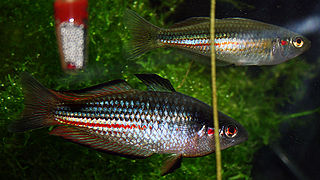 Overfeeding your aquarium is one of the most common mistakes made by aquarium hobbyists, and it isn’t one only made by beginners. It’s easy to go overboard when our fish “always seem hungry” and even appearing excited when they see you coming towards the tank with food in hand. Healthy fish pretty much always look hungry. It also doesn’t help that we’re directed by packaging instructions to feed amounts that may be inappropriate for the type and number of fish we are keeping. We want the best for our fish and we want to be successful in keeping them, but it’s easy to cross the line from feeding enough to feeding way too much.
Overfeeding your aquarium is one of the most common mistakes made by aquarium hobbyists, and it isn’t one only made by beginners. It’s easy to go overboard when our fish “always seem hungry” and even appearing excited when they see you coming towards the tank with food in hand. Healthy fish pretty much always look hungry. It also doesn’t help that we’re directed by packaging instructions to feed amounts that may be inappropriate for the type and number of fish we are keeping. We want the best for our fish and we want to be successful in keeping them, but it’s easy to cross the line from feeding enough to feeding way too much.
Problems Caused by Overfeeding
Leaving uneaten food in the aquarium is never a good idea. Watching food fall to the bottom of the tank, with the thought that your fish to eat later, can lead to big problems. Many fish are kind of programmed to eat food at certain places in the tank. Surface feeders, column feeders and bottom feeders tend to feed within their comfort zones, so you won’t typically see surface feeders travelling to the gravel for a snack, and fish that feed in the water column usually ignore food bits after they settle. No matter what kind of fish food you distribute, pellets, flakes, frozen foods or even live feeders, anything not eaten is left to decay. This unprocessed food, in addition to the waste produced by the food that is actually digested, can quickly create issues with your tank’s water chemistry and/or cause a bloom in the population of naturally occuring scavengers.
Uneaten foods quickly start to decay, adding to ammonia and nitrate levels of the aquarium, and it can very easily result in more bacteria than the nitrogen cycle can handle causing cloudy water. Overfeeding is not only dangerous to the health of your fish, but it causes unnecessary demands on your filtration, often resulting in poor water quality. Fortunately, the problems that arise from overfeeding are quickly and easily reversed or eliminated once you get your feeding habits under control.
Aquarists are also often shocked or full of disbelief when we tell them that the hordes of unsightly little “bugs” or worms creeping up the glass and through the rock and substrate are a probably a result of over-feeding their aquarium. What you see are probably either scavenger nematodes or planaria. Chances are there were a few of these critters in your tank from the start. They can be introduced via fish, plants, wood or other things you add to the aquarium as their microscopic eggs can travel on any of these things. They are generally harmess, but when you overfeed the opportunity arises for their populations to boom with the abundance of decaying matter in the substrate. Reducing the frequency and amount of food will help to bring the population back down to size, but you may also choose to treat the tank with anti-parasitic medications to speed the process along. Read More »
 That Fish Blog – Aquarium Advice and Information
That Fish Blog – Aquarium Advice and Information




